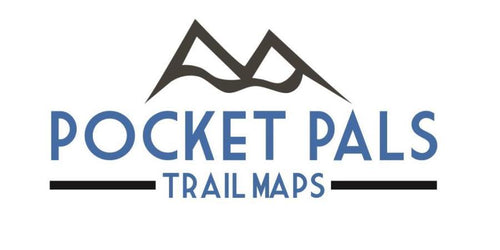Explore & Enjoy the Lost Creek Wilderness, one of Colorado's Treasures
The Lost Creek Wilderness has everything—peaks, creeks, outcroppings, arches, canyons, and scenery galore. You can fish, hunt (in certain areas), climb, ride horses, and follow the trails through the 119,790 acres of wilderness.
This Colorado treasure lies within the boundaries of the Pike National Forest and contains four mountain ranges (Platte River, Kenosha, Tarryall and Puma Hills), 34 peaks and about 100 miles of trails. No bikes or motorized vehicles are allowed, but camping is permitted anywhere—as long as you are 100 feet away from trails, creeks and lakes—so the Wilderness also offers the ability to enjoy nature in relative solitude. It is roughly 40 miles southwest of Denver and 50 miles northwest of Colorado Springs.
The easiest way to access the Lost Creek Wilderness is to turn north off of U.S. Highway 24 on County Road 77 (also known as Tarryall Road). This intersection is just west of Lake George. County Road 77 skirts along the southwest boundary of the Wilderness and offers access to the Twin Eagles and Ute Creek Trailheads before reaching the Tarryall Reservoir. Off County Road 77, before reaching either of the aforementioned trailheads, County Road 211 splits north and runs along the eastern boundary of the Wilderness. This road offers access to the Goose Creek and Wigwam Trailheads before leading towards Deckers.
I chose to explore the Goose Creek Trail of the 23 trails in the Lost Creek Wilderness. At first I thought this was a mistake. The trees surrounding the trailhead stand as a reminder of the fire that ripped through a few years ago. As far as I looked I couldn’t see a point that hadn’t been affected. The only color in the area was from the underbrush and flowers that had started to grow back in the last few years.
I set up camp, with my friend Whitney, just inside the trailhead entrance. We had gotten a late start so it was nearing nine in the evening and the sun was going down. The sounds of the creek rose from the ravine below us and echoed back down from the mountains above.
It was quiet, peaceful. There were no other people camping around us. The only hint of the city we knew was the faint borealis-like effect created by distant Denver and Colorado Springs lights. It was the kind of dark that seemed to create new stars never seen before and made it easy to understand what Ralph Waldo Emerson meant when he said, “… the man in the street does not know a star in the sky.” It was too beautiful a night to waste sleeping inside of a tent.
We started hiking early the next morning. The trail begins with a descent down a ravine, then loops around towards the creek and follows it north (you can also turn on Hankins Pass Trail in the first few hundred yards after the trailhead). At one moment you’re aware of burnt trees scabbing the landscape and the next you’re surrounded by the sound of a slight wind pushing through soft leaves. I couldn’t place my finger on where it happened, but along the way the trail lead beyond the fire’s reach.
Whitney and I hiked into the afternoon along the 9.6-mile stretch of Goose Creek, passing only three people the whole time.
The views are amazing inside the Wilderness area. For the most part we were hiking along the creek and could only see until the next bend, but after a couple of miles the trail rises high above the creek and, suddenly, the views open up. You’re able to see miles of portrait-quality scenery. Everything from meadows to mountains, dense forest to giant boulders are everywhere.
Before the trip I was concerned about the roads getting to the area since Whitney and I would be arriving in a two-wheel drive vehicle. We drove the entire length of County Road 211 from near Deckers to where it connects to County Road 77 and had no troubles with it at all. The Colorado Atlas and Gazetteer shows other entrances to the Lost Creek Wilderness—County Road 77 past Tarryall (western access), as well as State Route 285 (northern access). Both have access roads at least equal to the one we used. The South Park, and South Platte, Ranger Districts can be contacted for more information on road conditions and access; (719) 836-2031 and (303) 275-5610), respectively. Also, ranger stations should have a Pike National Forest map that shows trails in the Lost Creek Wilderness Area. The Colorado Atlas and Gazetteer is also a useful tool.
If you are interested in summiting the peaks of the Lost Creek Wilderness—and even if you’re not—it is worth it to pick up Colorado’s Lost Creek Wilderness: Classic Summit Hikes by Gerry and Jennifer Roach. The book provides excellent details on driving directions, trailheads, 74 hiking routes to the summits of 34 peaks in addition to maps and photographs. More importantly, it is a book by authors who are intimately acquainted with the area. It is useful for planning a trip and getting there. It is full of both practical and critical safety tips and information on how to protect and respect the Wilderness. In fact, this book is an indispensable part of any journey through the Lost Creek Wilderness.
Another useful book is Exploring Colorado’s Wild Areas by Scott S. Warren. This book is not as detailed as the Roach book, but contains information encompassing 69 wilderness areas throughout the state of Colorado. If exploring wilderness areas appeals to you, this book details many areas that may also be worth a visit.
There are many websites that contain information about Colorado wilderness areas. A great one is www.coloradowilderness.com. For those interested in fishing and hunting, this website suggests certain guides and outfitters who are familiar with these areas.
Whatever you do and whenever you go, make sure to follow “Leave No Trace” guidelines. These can be found in the Roach book as well as at www.coloradowilderness.com. Also, follow any restrictions posted at the trailhead entrances or as instructed by contacting the ranger stations. For example, campfires (with certain restrictions) are allowed in the Lost Creek Wilderness Area, but when I took my trip they were prohibited.
In essence, be safe and responsible so that you and everyone can enjoy these wilderness areas for years to come.
And, finally, DO enjoy the Lost Creek Wilderness. The trip is worth it.

